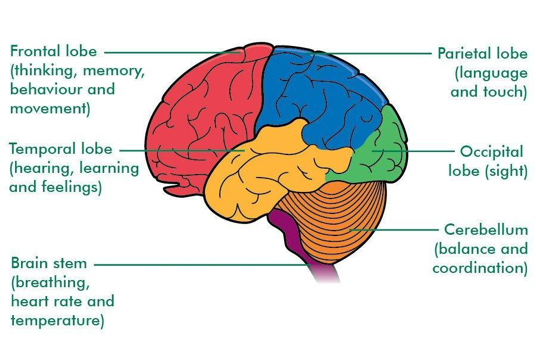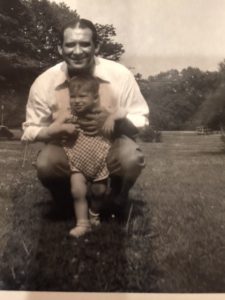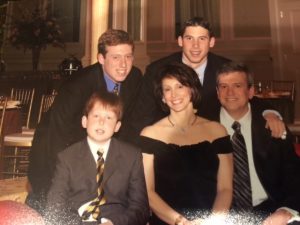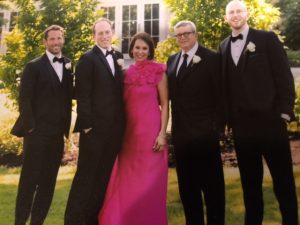Why do I need a trial lawyer if I have suffered a concussion, head injury or traumatic brain injury in a car wreck, fall or sports injury?
The brain is the world’s greatest computer and the least understood part of our anatomy. Our brain has three parts: the rational, the emotional, and, buried deep beneath those, the instinctive. Injuries to the brain, from catastrophic to minor, change the way we think, feel and act. Many of these changes go unnoticed by the person who suffers the brain injury. In fact, many people who suffer brain injuries may not even consider an injury to the brain as a reason for changes in the way they feel or act. This is because we believe that if we do not get hit in the head or lose consciousness, we cannot have hurt our brains. Brain injuries, such as concussions, in car wrecks and falls are underreported, underdiagnosed and undertreated. Many times, medical professionals tell us that the changes in the way we are feeling or acting are the result of emotional or psychological problems as opposed to an injury to our brains.
Since concussions and brain injuries are so difficult to understand, it is extremely important to hire a trial lawyer who understands the brain and concussions and who has experience representing people who have suffered traumatic brain injuries. Car wrecks, falls and sports injuries are three very common causes of head injuries.
The Brain, Skull and Their Functions
Understanding the reason why you need a trial lawyer to handle a personal injury case involving a head injury begins with a basic understanding of the brain and the skull. The brain is a very fatty organ. Seventy-five percent (75%) of the brain is made of water. It is the consistency of Jello. The brain floats in cerebrospinal fluid. The fluid is contained by a membrane and sits within the skull. Quite simply, the skull is the armor for the brain.
Your lawyer must also understand what the different parts of the brain do. The front part of the brain, comprised of the frontal and temporal lobes, generally controls thinking, voluntary movement, hearing and feeling. The right side of the brain controls the left side of the body, and the left side of the brain controls the right side of the body. The back of the brain, or the cerebellum, controls coordination and balance.
As the image below shows, the brain is divided into four parts, or lobes: the frontal, the temporal, the parietal and the occipital.

Since the causes and frequency of concussions are misunderstood by most people, your lawyer must understand concussions and the wide range of symptoms they produce. The average person believes that a concussion happens when someone is hit in the head or loses consciousness. This is not correct. According to Merriam-Webster’s Online Dictionary, a concussion is “a jarring injury of the brain resulting in disturbance of brain function sometimes marked by permanent damage.” In order to suffer a concussion, one does not need to be struck in the head or lose consciousness. A concussion is simply an injury to your brain.
What are the symptoms of a traumatic brain injury?
Like all other injuries, brain injuries can be mild, moderate or severe. Generally speaking, a moderate brain injury occurs from a loss of consciousness from 20 minutes to 6 hours, and a severe brain injury occurs from a loss of consciousness for more than 6 hours. The focus of this blog is mild traumatic brain injury, which occurs when there is a brain injury with either no loss of consciousness or a loss of consciousness for less than 20 minutes. One of the principal ways to identify a mild traumatic brain injury is based on the symptoms that follow car wrecks, falls or sports injuries. The symptoms of a mild traumatic brain injury include fatigue, headaches, visual disturbances, memory loss, poor attention or concentration, sleep disturbances, dizziness or loss of balance, irritability, emotional disturbances, feelings of depression, seizures, nausea, loss of smell, sensitivity to light and sounds, mood changes, getting lost or confused and/or slowness in thinking.
How do brain injuries happen?
The most common way to suffer a traumatic brain injury is from a direct blow to the head. Head injuries frequently occur in car wrecks when a person’s head hits the windshield or the side of the car. Head injuries also frequently occur when someone trips and falls and hits the back of their head. Head injuries are especially common in sports with head-to-head contact between players.
In each of these types of injuries, the brain strikes the inside of the skull. The head and the brain are moving together, either forward or backward. When the car crash victim’s head hits the windshield, it stops. Unfortunately, their brain, which is floating in fluid, keeps moving. The only thing that stops the brain from moving is the skull. Similarly, when the fall victim or athlete falls and hits the back of their head, the brain slams into the inside of the back of the skull. The same thing happens when someone hits the right or left side of their head. The only thing that stops the brain from moving to the right or the left is when it hits the inside of the skull. Brain damage can occur when the brain slams into the side of the skull. The damage can range from a bruise to bleeding. In addition, axons that are long threadlike nerve tissues that transmit impulses from one cell to another cell can be sheared or torn during the injury. Significant bleeding or axonal shearing can be seen on MRI.
The more difficult to recognize traumatic brain injuries occur when there is not direct injury to the head or loss of consciousness. In any car wreck, fall or sports injury where there is a whiplash type injury, a concussion or traumatic brain injury frequently occurs. The mechanism of injury is exactly the same. The head is snapped forward and the brain moves with it. When nature stops our head from moving forward, the brain keeps moving until it slams into the inside of the skull. Then as the head is snapped in the opposite direction, the brain begins to travel in the opposite direction. When nature stops our head from moving in the opposite direction, the brain keeps moving until it slams into the inside of the skull. Each time the brain smashes into the skull, it is damaged. In cases like this, the bruising or tearing of the axons, or nerve tissues, cannot be seen on an MRI. The resulting brain injury is just as real and can be permanent.
What are some challenges for sufferers of a mild traumatic brain injury?
The brain controls all physical and emotional activity. As a result, the symptoms of a traumatic brain injury overlap the symptoms of other injuries or conditions. When someone is in a car wreck, fall or sports injury, neck problems are a frequent result. Neck injuries frequently cause head pain and headaches. More importantly, severe pain in the neck interferes with concentration and sleep and can cause irritability or depression. These overlapping symptoms frequently prevent the injured person from recognizing that they have suffered a concussion. The overlapping symptoms frequently mask the traumatic brain injury so that medical professionals may not focus on it. Doctors tend to focus on the physical injury first, believing that when the physical injury heals, the symptoms will go away. This leads to a delay in the diagnosis and treatment of a traumatic brain injury.
When someone suffers from a history of anxiety, depression or any other emotional issues, the symptoms of those diseases can include fatigue, headaches, poor attention or concentration, sleep disturbances, irritability and emotional disturbances, feelings of depression, mood changes, confusion and slowness in thinking. When a person with a history of emotional or psychological issues is hurt in a car wreck, fall or sports injury and experiences these symptoms, they understandably believe that this is related to their pre-existing emotional or psychological problems. Medical professionals may also frequently confuse the symptoms of traumatic brain injury with a recurrence of the injured person’s emotional or psychological condition.
Two major problems are caused by the fact that the problems an injured person experiences as a result of a concussion or mild traumatic brain injury mimic the problems caused by neck injuries or emotional problems. First, the confusion about the cause of the problems often results in a delay in diagnosis. The delay in diagnosis causes a delay in treatment. The delay in treatment makes it less likely that the traumatic brain injury will get better. Second, and more significantly, the delay in treatment makes it far less likely that the treating doctor will quickly relate the symptoms to the car wreck, fall or sports injury.
Do you need a trial lawyer if you were hurt in car wreck, fall or sports injury?
Anyone who suffers a traumatic brain injury in a car wreck, fall or sports injury should consider contacting an experienced trial lawyer. The attorney you choose must have experience in handling cases like these. Experience will teach your lawyer:
- How to recognize the symptoms of concussion or traumatic brain injury.
- How to help you get the medical care and treatment you need in order to recover.
More importantly, you should make sure the lawyer you hire has courtroom experience in representing people with concussions or traumatic brain injury for the following reasons:
- First, your lawyer should be able to explain, in plain English, what a concussion is. Your lawyer should be able to explain to both you and a judge or jury how your brain injury resulted from the car wreck, fall or sports injury.
- Second, your lawyer’s experience will provide them with essential knowledge of how insurance companies and their lawyers will defend your case. Insurance companies and their lawyers have a game plan for defending cases in which a person has a concussion or traumatic brain injury as a result of a car wreck, fall or sports injury.
- Third, most mild traumatic brain injuries cannot be shown with any kind of test. As a result, doctors are forced to rely on their patients’ complaints in order to diagnose a traumatic brain injury. Insurance companies and their lawyers know that most people in American society view those who make claims for personal injuries as a result of a car wreck, fall or sports injury skeptically. This skepticism predisposes judges or juries who are asked to decide whether someone has a traumatic brain injury to think that the injured person is faking the symptoms in order to get money. Further, the skepticism predisposes judges or juries who believe that a person has a brain injury to think that the problem is not the result of the car wreck, fall or sports injury.
- Fourth, insurance companies and their lawyers also know that the people in our communities believe that it’s bad to award money to people who are hurt in a car wreck, fall or sports injury. The average person believes that awarding money for personal injuries, including concussions or traumatic brain injuries, caused by a car crash will cause our insurance payments to go up. The average person believes that awarding money for personal injuries, including concussions or traumatic brain injuries, caused by slipping and falling will drive businesses out of our state.
- Fifth, insurance companies and their lawyers know that it is hard for a person with a traumatic brain injury to fight them in Court. Insurance companies and their lawyers use the tactic of deny, defend, delay to discourage injured people to stand up for their rights. Insurance companies and their lawyers know it is expensive for a person with a traumatic brain injury to fight them in court.
- Finally, insurance companies and their lawyers know that people will not award money to people with traumatic brain injury if they think the person is a liar, faker or fraud. So, insurance companies and their lawyers use the medical records of the person with a traumatic brain injury to make it look like the person is lying. Insurance companies and their lawyers dig into the past of a person with a traumatic brain injury to try to show they are lying. Insurance companies and their lawyer will even hire private investigators to spy on a person with a traumatic brain injury to try to show they are lying. Insurance companies and their lawyers know that if they make a person with a traumatic brain injury seem like they are lying, they will not get compensated–and the insurance company gets to increase their profits.
An experienced trial lawyer will know how to fight insurance companies and their lawyers by knowing how to prove traumatic brain injuries are real with witnesses, documents, pictures and video. Experienced trial lawyers know how to overcome the false belief that awarding money to someone who suffers a traumatic brain injury from a car wreck, fall or sports injury is bad. Your trial lawyer should actually be able to show that making the person who caused the traumatic brain injury pay for what they caused is good for our community. An experienced trial lawyer will have the courage to fight the insurance company in court and the compassion to help the person with the traumatic brain injury deal with the deny, defend, delay strategy. Finally, an experienced trial lawyer will know how use the tactic of trying to turn the person with a traumatic brain injury into a liar against the insurance company.
Concussions and traumatic brain injuries are serious, life-changing injuries. They are hard to understand and treat. It is very hard to prove that a person has a traumatic brain injury, but it’s not impossible. Insurance companies and their lawyers know how to get their clients off the hook when a traumatic brain injury is caused by a car wreck, fall or sports injury. That’s why it is important for anyone suffering from a concussion or traumatic brain injury from a car crash, fall, or sports injury to talk with an experienced trial lawyer.








